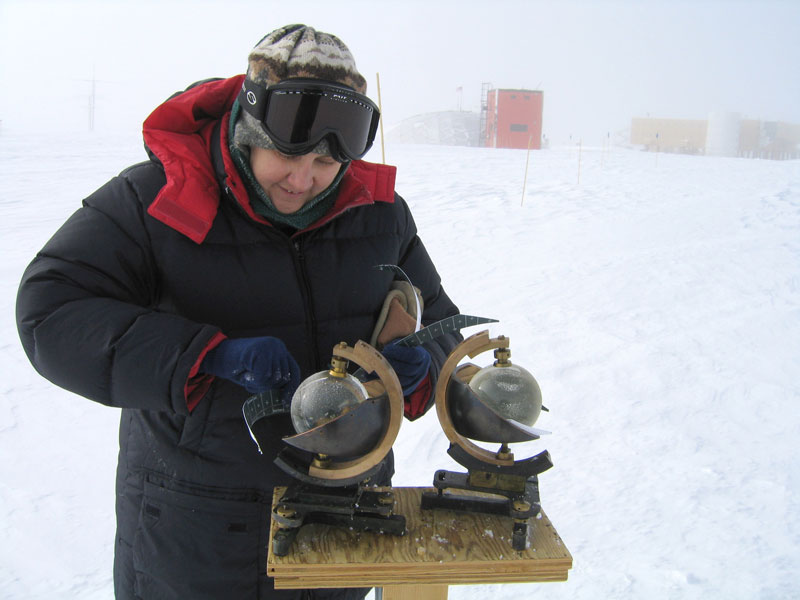Seismological research at the South Pole is supported under the US National Science Foundation Earth Sciences Program. Collecting data on seismic activity was one of the first scientific objectives at the South Pole during the International Geophysical Year in 1957. Since this time, records have been updated regularly so that the seismologic dataset now represents the longest running series of scientific observations at the Pole. Conditions at the Pole are ideal for studying earthquakes and investigating the structure of the Earth. Vibrations from seismic events travel through the Earth and the polar ice sheet and their energy levels are recorded by seismometers at the South Pole. Because of its position at the Earth’s axis of rotation, measurements at the Pole of the energy generated by major earthquakes is not affected by the rotational forces which influence recordings elsewhere on Earth.
Seismometers near the South Pole form part of the Global Seismographic Network (GSN). They are situated eight kilometers (five miles) from the Pole in the center of the Quiet Circle, where they are buried ~ 300 m (~1000 feet) below the ice surface to record the vibrations of the Earth. These seismometers are able to detect vibrations up to four times quieter than is possible at other observatories because of the relative lack of other vibration sources which can generate seismic ‘noise’. The Quiet Circle and Quiet Sector are designed to ensure that these unique conditions are maintained at the Pole, while allowing for other forms of scientific research to be carried out within other sectors.

